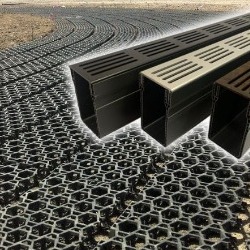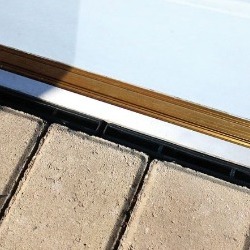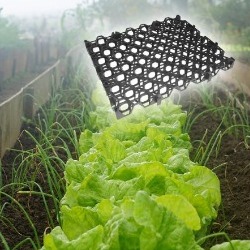Patio Drainage Features and Benefits
- Preventing Structural Damage: Adequate patio drainage prevents water from accumulating around the foundation of your home and patio. Excess water can weaken the foundation and lead to cracks, shifts, and structural instability. Proper drainage safeguards your property's integrity, avoiding costly repairs.
- Enhancing Aesthetics: Effective patio drainage keeps the area dry and free from puddles. This not only makes the space more visually appealing but also allows you to create a more functional outdoor living area. You can add garden structures, planters, and other decorative elements without the worry of them getting damaged by standing water.
- Reducing Slip Hazards: Standing water on patios can create slippery surfaces, posing a safety hazard to you and your guests. Proper drainage minimizes these risks, ensuring a safer environment for walking, especially during wet weather.
- Preserving Hardscape Materials: Excess moisture can deteriorate hardscape materials such as concrete, stone, and brick. Patio drainage channels water away, extending the lifespan of these materials and reducing the need for frequent maintenance or replacement. This saves you money in the long run and maintains the overall appeal of your outdoor space.
Patio Drainage Installation and Maintenance
For effective patio drainage, ensure proper slope and grading away from structures. Use permeable materials like gravel or porous pavers, and establish a well-draining subbase with layers of crushed stone. Consider surface drains or French drains to manage water runoff, ensuring pipes have suitable slopes and outlets. For more information on the installation and maintenance of various drainage options, take a look at our guides and tips!
Regular maintenance of your patio drainage is essential for optimal function. You should clear drains and pipes of debris to prevent clogging, inspect after heavy rainfall, and promptly address any issues. This upkeep ensures the system functions efficiently, preventing water-related problems and preserving the integrity of the patio and surrounding area.
Patio Drainage FAQs
Why is patio drainage important?
Proper patio drainage is crucial to prevent water from pooling around your patio, which can lead to various issues such as soil erosion, foundation damage, and plant health problems. It helps maintain the integrity of your patio, preserving the surrounding landscape, and preventing potential safety hazards due to slippery surfaces.
What are some signs of poor patio drainage?
Signs of poor drainage include water puddles or standing water on the patio after rainfall, erosion or soil displacement around the patio area, mold or mildew growth on patio surfaces, and compromised plant health due to waterlogged soil. These indicators suggest that the current drainage system may need improvement.
How can I improve patio drainage?
There are several ways to enhance patio drainage. These include installing a proper slope away from the patio to direct water runoff, using permeable materials for the patio surface, incorporating French drains or surface drains to collect and channel water away, and considering the strategic placement of landscaping elements to guide water flow.
Can I install patio drainage myself or should I hire a professional?
The complexity of patio drainage systems varies based on factors such as the layout of your property, soil type, and local climate. While some simple solutions like adjusting the slope can be done by homeowners, more intricate drainage systems might require professional expertise to ensure proper functionality and long-term effectiveness. Consulting a professional can help you design and implement the most suitable drainage solution for your specific situation.




